
The First Australian Imperial Force (AIF) was one of the first military forces to care for soldiers' teeth, and raised a large number of specialist dental units during World War I.

The First Australian Imperial Force (AIF) was one of the first military forces to care for soldiers' teeth, and raised a large number of specialist dental units during World War I.
As originally formed, the AIF did not include any dentists, with dental care of soldiers being made part of the duties of the force's medical officers. Dentists and dental mechanics who enlisted in the AIF also provided dental care on an unofficial basis. [1]
The AIF's experiences in the Gallipoli Campaign showed the need for proper dental care of soldiers. Accordingly, 36 dental units were raised between January and April 1916 from qualified personnel already serving within the AIF. Each unit comprised a dentist, two dental mechanics and an orderly. These men were all members of the Australian Dental Corps. [1]
By the end of the war, 118 dental units had been formed and many of the AIF's formation headquarters had highly ranked dental staff officers. The dental units were usually attached to base camps or specialist medical units and hospitals. [1] The AIF was the only Allied force of World War I to form specialised dental units, with dental teams in the other national armies being integrated into general-purpose medical units. [1]

Corps is a term used for several different kinds of organization. A military innovation by Napoleon, the formation was first named as such in 1805. The size of a corps varies greatly, but from two to five divisions and anywhere from 40,000 to 80,000 are the numbers stated by the US Department of Defense.

The First Australian Imperial Force was the main expeditionary force of the Australian Army during World War I. It was formed as the Australian Imperial Force on 15 August 1914, following Britain's declaration of war on Germany, initially with a strength of one infantry division and one light horse brigade. The infantry division subsequently fought at Gallipoli between April and December 1915, being reinforced by a second division which was later raised, as well as three light horse brigades. After being evacuated to Egypt the AIF was expanded to five infantry divisions, which were committed to the fighting in France and Belgium along the Western Front in March 1916. A sixth infantry division was partially raised in 1917 in the United Kingdom, but was broken up and used as reinforcements following heavy casualties on the Western Front. Meanwhile, two mounted divisions remained in the Middle East to fight against Turkish forces in the Sinai and Palestine.

The Australian Corps was a World War I army corps that contained all five Australian infantry divisions serving on the Western Front. It was the largest corps fielded by the British Empire in France. At its peak the Australian Corps numbered 109,881 men. By 1918 the headquarters consisted of more than 300 personnel of all ranks, including senior staff officers, as well as supporting personnel such as clerks, drivers and batmen. Formed on 1 November 1917, the corps replaced I Anzac Corps while II Anzac Corps, which contained the New Zealand Division, became the British XXII Corps on 31 December. While its structure varied, Australian Corps usually included 4–5 infantry divisions, corps artillery and heavy artillery, a corps flying squadron and captive balloon sections, anti-aircraft batteries, corps engineers, corps mounted troops, ordnance workshops, medical and dental units, transport, salvage and an employment company.

The Dental Corps of the United States Navy consists of naval officers who have a doctorate in either dental surgery (DDS) or dental medicine (DMD) and who practice dentistry for Sailors and Marines to ensure optimal oral health.
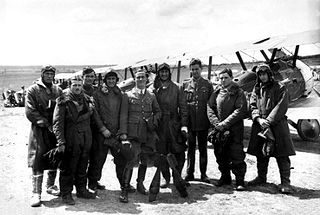
The Australian Flying Corps (AFC) was the branch of the Australian Army responsible for operating aircraft during World War I, and the forerunner of the Royal Australian Air Force (RAAF). The AFC was established in 1912, though it was not until 1914 that it began flight training.
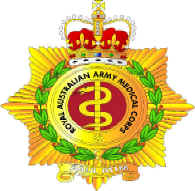
The Royal Australian Army Medical Corps (RAAMC) is the branch of the Australian Army responsible for providing medical care to Army personnel. The AAMC was formed in 1902 through the amalgamation of medical units of the various Australian colonies and was first deployed to South Africa as a small detachment of personnel supporting the Australian Commonwealth Horse during the Second Boer War. The corps has participated in every Australian Army operation since then, including wars and peacekeeping operations. The "Royal" prefix was granted in 1948.
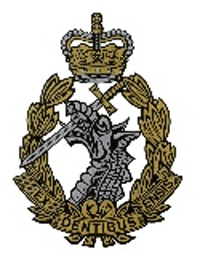
The Royal Army Dental Corps (RADC) is a specialist corps in the British Army that provides dental health services to British Army personnel and their families in war and in peace. The corps is a part of the British Army's Army Medical Services.

The Army Medical Department of the U.S. Army (AMEDD), formerly known as the Army Medical Service (AMS), encompasses the Army's six medical Special Branches. It was established as the "Army Hospital" in July of 1775 to coordinate the medical care required by the Continental Army during the Revolutionary War. The AMEDD is led by the Surgeon General of the U.S. Army, a lieutenant general.
The Royal New Zealand Army Medical Corps (RNZAMC) is a corps of the New Zealand Army, the land branch of the New Zealand Defence Force (NZDF). The Medical Corps provides for the medical needs of soldiers, such as diagnosing and treating diseases and injuries. Medical personnel are part of almost all Army exercises and operations, and personnel work in conjunction with personnel from the Royal New Zealand Dental Corps and the Royal New Zealand Nursing Corps.

Unit colour patches are a method of identification used by the Australian Army, used to indicate which unit a soldier belongs to.

In Australia, the outbreak of World War I was greeted with considerable enthusiasm. Even before Britain declared war on Germany on 4 August 1914, the nation pledged its support alongside other states of the British Empire and almost immediately began preparations to send forces overseas to engage in the conflict. The first campaign that Australians were involved in was in German New Guinea after a hastily raised force known as the Australian Naval and Military Expeditionary Force was dispatched from Australia to seize German possessions in the Pacific in September 1914. At the same time another expeditionary force, initially consisting of 20,000 men and known as the First Australian Imperial Force (AIF), was raised for service overseas.
A medical corps is generally a military branch or officer corps responsible for medical care for serving military personnel. Such officers are typically military physicians.
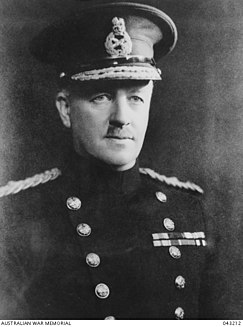
Major General Rupert Major Downes, was an Australian soldier, general, surgeon and historian in the first half of the 20th century. Downes attended the University of Melbourne, graduating with his medical degrees in 1907. He returned to the university to pursue a Doctor of Medicine degree, which was awarded in 1911.
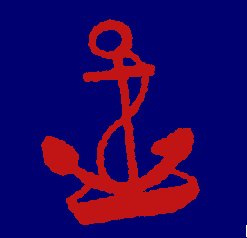
The Royal Australian Naval Bridging Train was a unique unit of the Royal Australian Navy. It was active only during the First World War, where it served in the Gallipoli and the Sinai and Palestine Campaigns. The Train was formed in February 1915 and stood down in May 1917. Throughout its existence, it was composed of Royal Australian Naval Reservists under the command of Lieutenant Commander Leighton Bracegirdle. Normally under the command of the British IX Corps, the Train also supported the I ANZAC Corps and Imperial Camel Corps in the defence of the Suez Canal.
They were the only Australian naval unit serving in a European theatre of war. They were therefore bent on proving, both to the Royal Navy and to the British Army, that they could overcome any difficulties.
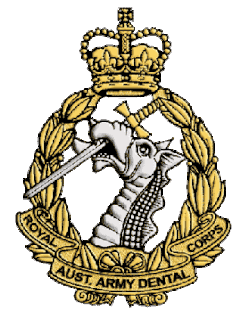
The Royal Australian Army Dental Corps (RAADC) is a corps within the Australian Army. It was formed on 23 April 1943 during World War II as the Australian Army Dental Corps, before being granted the 'Royal' prefix in 1948. Prior to its formation dentists were part of the Australian Army Medical Corps. The role of the RAADC is to provide dental care to army personnel in order to minimise the requirement for the evacuation of dental casualties, to conserve manpower and to reduce the burden of casualty evacuation. In the post-war years, the corps has provided personnel to deployments in Japan, Korea and Vietnam. It has also contributed to peace-keeping operations in Somalia, Rwanda, Bougainville and East Timor.

The Australian Army was the largest service in the Australian military during World War I. The First Australian Imperial Force (AIF) was the Army's main expeditionary force and was formed from 15 August 1914 with an initial strength of 20,000 men, following Britain's declaration of war on Germany. Meanwhile, the separate, hastily raised 2,000-man Australian Naval and Military Expeditionary Force (AN&MEF), landed near Rabaul in German New Guinea on 11 September 1914 and obtained the surrender of the German garrison after ten days; it later provided occupation forces for the duration of the war. In addition, small military forces based on the pre-war Permanent Forces and part-time Citizen Forces were maintained in Australia to defend the country from attack.

The Australian Cycling Corps was formed in Egypt in 1916 as part of the Australian Imperial Force (AIF), and fought on the Western Front in France and Belgium during World War I. They were used mainly as despatch riders, while also conducting reconnaissance and patrolling. It was disbanded in 1919.

The Royal New Zealand Dental Corps (RNZDC) is a corps of the New Zealand Army. The corps was initially formed on 7 November 1915 as the New Zealand Dental Corps under the command of Lieutenant Colonel Thomas Hunter, as part of New Zealand's contribution to World War I. The corps was formed from personnel who were transferred from the New Zealand Medical Corps, who were charged with ensuring the dental fitness of New Zealand troops being sent overseas, and for the provision of emergency dental care in the field. The royal designation was adopted in 1947.

Elements of the Second Australian Imperial Force (AIF) were located in the United Kingdom (UK) throughout World War II. For most of the war, these comprised only a small number of liaison officers. However, between June and December 1940 around 8,000 Australian soldiers organised into two infantry brigades and supporting units were stationed in the country. Several small engineer units were also sent to the UK, and up to 600 forestry troops were active there between July 1940 and mid-1943. A prisoner of war (POW) repatriation unit arrived in the UK in August 1944, and over 5,600 released AIF prisoners eventually passed through the country. Following the war, small numbers of Australian soldiers formed part of a military cricket team which toured England, and the Army contributed most members of the Australian contingent to the June 1946 victory parade in London.

Arthur Graham Butler was an Australian soldier and military historian. He was the main author of the Official History of the Australian Army Medical Services, 1914–1918, part of the Official History of Australia in the War of 1914–1918.